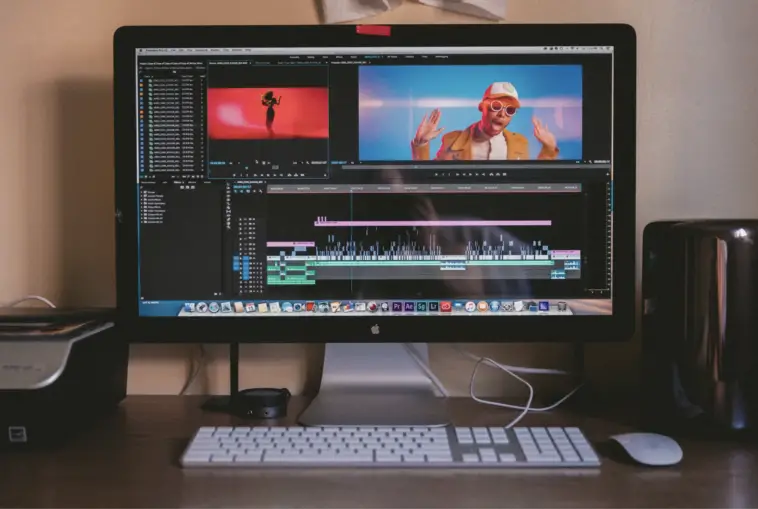In an era where content is king, and technology continues to push the boundaries of creativity, AI-generated videos have emerged as a powerful tool for creators, marketers, and enthusiasts alike. These videos offer a unique blend of convenience and innovation, enabling you to generate stunning visuals, entertaining animations, and informative presentations. But how do you create the perfect AI-generated video? Let’s dive deep into the process, step by step.
Select the Right AI Tool for Your Project
Selecting the right AI tool for your video project is akin to choosing the perfect brush for a masterpiece. It’s the foundational step of every how to make AI videos’ guide, and the choice you make here will significantly impact the final result. Consider your goals, budget, and the type of video you want to produce.
For instance, if your objective is to craft a stunning animation, platforms like Vyond or Powtoon can be excellent choices. They provide you with a range of templates and animation styles to create engaging visuals. These user-friendly tools require minimal design skills, making them accessible to beginners and experienced animators alike.
However, if you need to create videos that rely heavily on narration, Lumen5 or Wideo might be more suitable. These platforms offer robust text-to-speech capabilities, enabling you to generate videos with voiceovers that sound convincingly human.
Remember, your choice of AI tool should align with your creative vision and the unique demands of your project. Take your time to explore the available options and test the features to see which one best fits your needs.
Scripting and Storyboarding: The Blueprint of Your Video
Creating a compelling video begins with a clear and engaging script, along with a well-thought-out storyboard. Think of the script as the heart of your video. It’s here that you’ll convey your message, entertain your audience, or educate them.
When crafting your script, remember the golden rule of conciseness. Keep your sentences and paragraphs short and to the point. Your audience’s attention span is limited, and a well-structured script ensures your message is conveyed effectively. Additionally, incorporate a compelling narrative arc with a clear beginning, middle, and end. This will keep viewers engaged and lead them through your content seamlessly.
Storyboarding, on the other hand, is your visual roadmap. It helps you visualize how the script translates into images and animations. An effective storyboard outlines the sequence of scenes, camera angles, and any specific actions or transitions. This preparation is crucial for ensuring a coherent and visually appealing video.
Fine-Tune Your Voiceover and Text-to-Speech
In the world of AI-generated videos, the voiceover or text-to-speech narration is a critical element that demands careful attention. The quality of your voiceover can make or break your video, determining whether it sounds natural or robotic.
If you opt for a voiceover that aims to mimic a human, it’s essential to select the right AI-generated voice. Modern AI tools provide a plethora of options, allowing you to choose from different genders, accents, and tones. Pay close attention to factors like tone, pacing, and pronunciation to make your voiceover sound as human as possible.
Keep in mind that some AI tools offer post-processing options for voiceovers. These features enable you to adjust the pitch, speed, and other attributes to fine-tune the narration to your liking. Experiment with these settings until you achieve the desired effect.
For text-to-speech narration, ensure that the AI tool you choose supports multiple languages and accents if needed. Quality text-to-speech should sound clear and expressive, providing your video with a professional touch.
Image and Video Selection: Picking the Right Visual Elements
Visual elements are the heart of your video. Selecting the right images and videos is crucial for conveying your message effectively. AI tools often come with built-in libraries for images and videos, making it convenient to search for and integrate visuals that align with your script and storyboard.
When sourcing images, explore platforms like Unsplash, Shutterstock, and Adobe Stock, which offer a wide range of high-quality visuals. However, it’s not just about the quality; relevance is equally important. Ensure that the visuals you choose complement your narrative and enhance the viewer’s understanding of your message.
Additionally, some AI tools offer image editing features that allow you to apply filters, adjust brightness and contrast, or even add text overlays. This flexibility enables you to customize your visuals to suit your video’s aesthetic.
Master the Art of Video Editing
Video editing is where your AI-generated video truly takes shape. While AI tools can automate a significant part of the creation process, a touch of human editing can elevate your video to the next level. Look for tools that provide a range of editing options, such as trimming, splitting, and rearranging clips, as well as the ability to add transitions, effects, and text overlays.
Maintaining the flow and pacing of your video is crucial. Ensure that the timing of your visual elements and voiceover aligns seamlessly. Be mindful of the rhythm and cadence of your video, and don’t be afraid to experiment with different editing techniques to make your video more engaging.
Experiment with various transitions, like fades, cuts, or wipes, to smoothly connect scenes. These transitions can enhance the visual appeal of your video and create a professional, polished look.
Adding Music and Sound Effects for Impact
To create an emotionally resonant video, you must not overlook the importance of audio elements. Music and sound effects can significantly impact the viewer’s emotional response to your content.
Most AI tools offer extensive audio libraries, which provide a wide range of music genres and moods to choose from. Consider the atmosphere you want to create in your video and select music that complements it. Uplifting music can enhance positivity, while suspenseful tunes can keep viewers on the edge of their seats.
Sound effects, such as applause, laughter, or doorbells, add depth and realism to your video. They can emphasize specific moments and make your video more immersive. Ensure that sound effects are synchronized with on-screen actions for a seamless viewing experience.
Remember to balance the audio elements, ensuring that the voiceover, music, and sound effects work together harmoniously. Adjust the volume levels to avoid overpowering or distracting your audience.
Personalization and Branding
To make your video truly unique and memorable, consider personalizing it with your brand’s identity. Personalization not only enhances your video’s aesthetic but also strengthens your brand presence in the digital landscape.
Incorporate your logo, brand colors, and any relevant branding elements throughout the video. Integrate your logo as a watermark in the corner of the screen, ensuring it’s visible but unobtrusive. Use your brand colors for text overlays, transitions, and other design elements to maintain a consistent visual identity.

Personalization goes beyond visuals. Craft a compelling introduction and conclusion that align with your brand’s message and values. This approach not only strengthens brand recognition but also adds a professional touch to your video.
Creating the perfect AI-generated video demands a combination of creativity, strategy, and the right tools. By following these detailed steps, you’ll be well on your way to crafting captivating videos that leave a lasting impression on your audience. So, embrace the power of AI, unleash your creativity, and get ready to make your videos shine in the digital landscape. Happy video creation!




